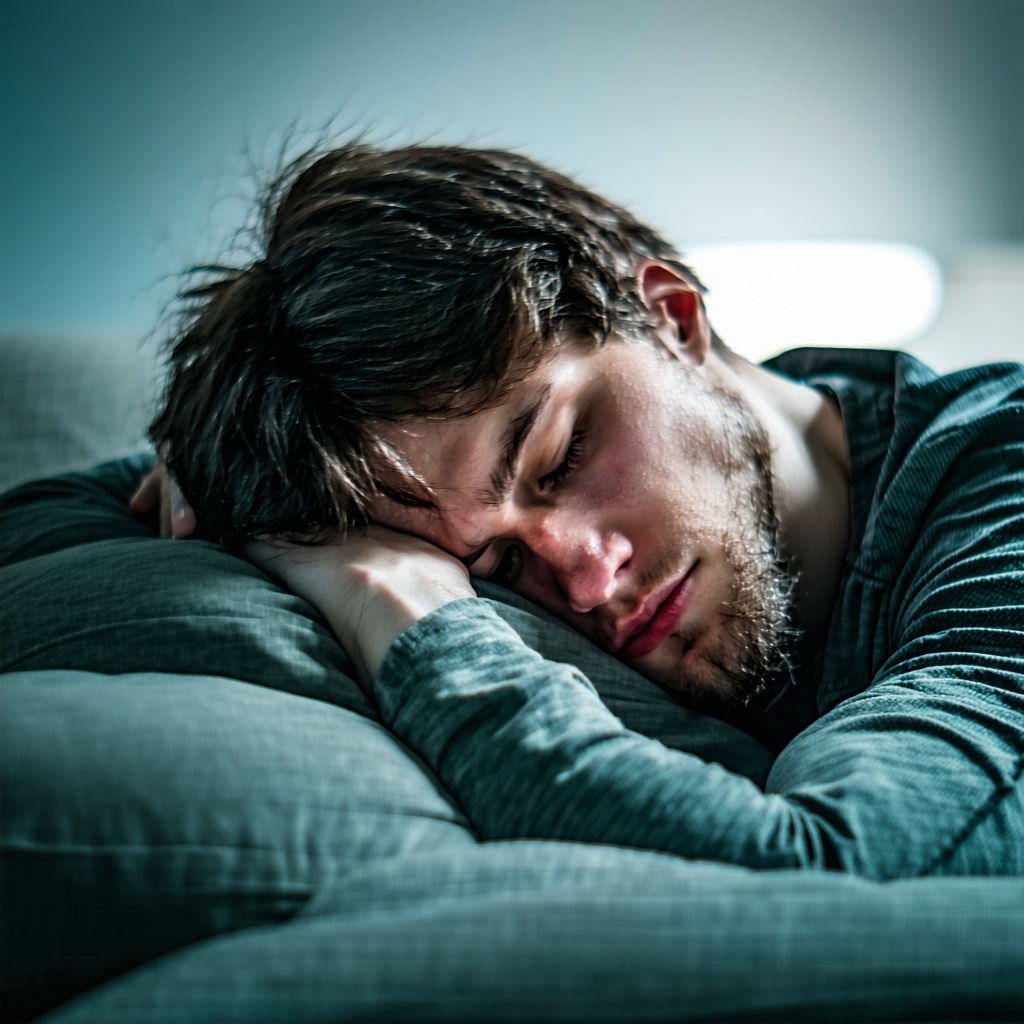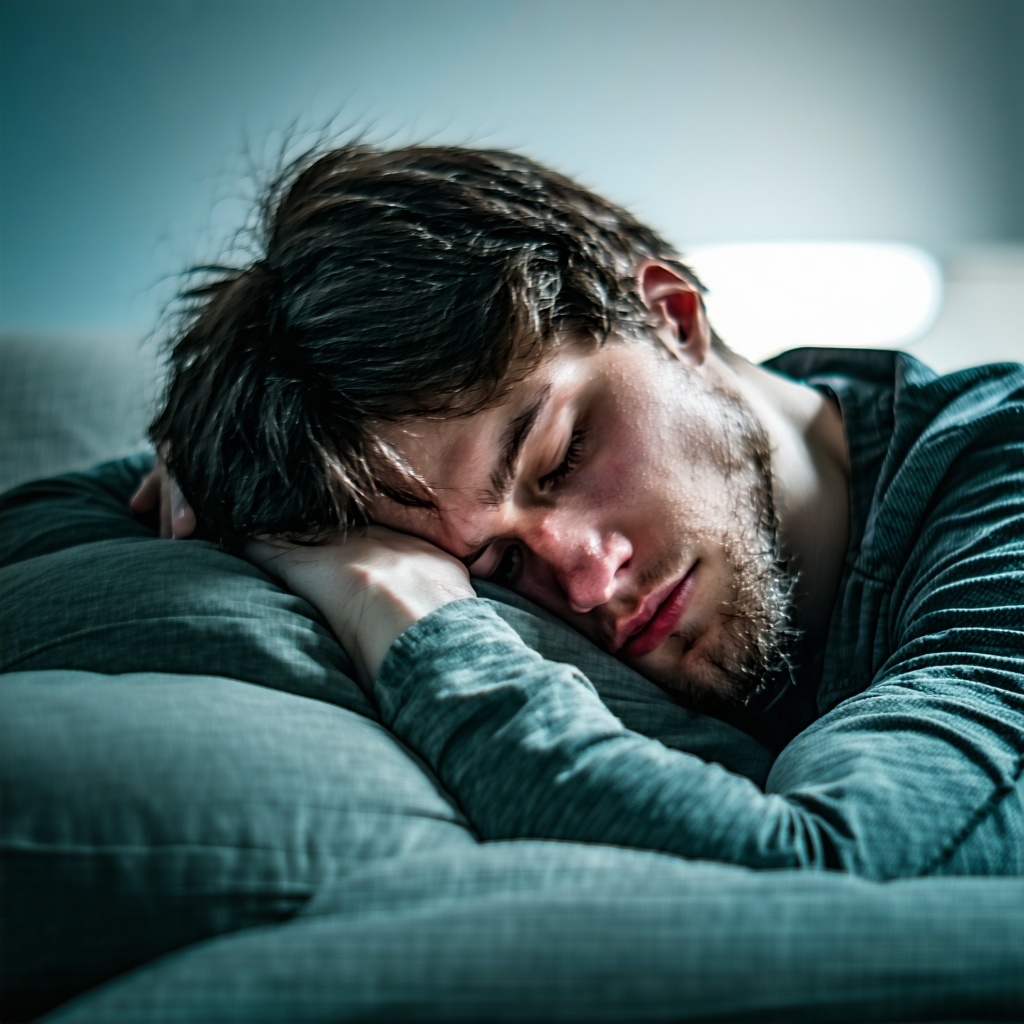
Are You Fighting an Invisible Battle with Sleep?
Imagine preparing an important presentation for work. You've spent weeks gathering data, creating slides, and rehearsing your delivery. As you stand to address your colleagues, an overwhelming wave of sleepiness crashes over you. Despite your best efforts to fight it, your eyelids grow heavy, your speech slurs, and within seconds, you're asleep—right in the middle of your career-defining moment.
For the estimated 200,000 Americans living with narcolepsy, scenarios like this aren't just nightmares—they're reality. Narcolepsy doesn't care about your schedule, your responsibilities, or your dreams. It strikes without warning, turning ordinary moments into extraordinary challenges.
At Sleep Centers of Texas, we understand the frustration, embarrassment, and isolation that comes with narcolepsy. The constant battle against sleep. The misunderstandings from friends and family who think you're just "lazy" or "not trying hard enough." The opportunities missed and the life unlived because of a condition you can't control.
But there's hope. With proper diagnosis and treatment, you can regain control of your sleep—and your life.
Understanding the Enemy: What Is Narcolepsy?
Narcolepsy is a chronic neurological disorder that disrupts your brain's ability to regulate sleep-wake cycles. Think of your brain as having an internal sleep-regulator that's malfunctioning—sending "sleep now" signals at inappropriate times.
Under normal circumstances, your brain progresses through several stages of sleep in an organized pattern throughout the night. When you have narcolepsy, these boundaries between wakefulness and sleep become blurred. You might unexpectedly slip into REM sleep (the dream stage) during daytime hours, leading to sudden sleep attacks or vivid hallucinations.
Narcolepsy isn't just about falling asleep at inconvenient times—it's about living in a constant state of extreme fatigue that medication, caffeine, and willpower can't overcome.
Take the First Step Toward Better Days
Living with undiagnosed narcolepsy means accepting limitations that may be unnecessary. It means believing your exhaustion is normal when it's actually treatable. It means watching life happen from the sidelines when you could be fully participating.
You deserve better sleep. You deserve better days. You deserve answers.
Contact Sleep Centers of Texas today at (210) 520-8333 to schedule a consultation with one of our sleep specialists. Take the first step toward understanding your sleep and transforming your wakefulness.
The Hidden Symptoms of Narcolepsy
When most people think of narcolepsy, they picture someone suddenly collapsing into sleep mid-conversation—like scenes from comedy movies. While these dramatic episodes can occur, narcolepsy's reality is often more subtle and insidious.
Excessive Daytime Sleepiness (EDS)
The hallmark symptom of narcolepsy is overwhelming daytime drowsiness, regardless of how much sleep you got the night before. This isn't the typical afternoon slump that a cup of coffee can fix. It's a persistent, irresistible urge to sleep that can strike anytime—while driving, during conversations, at work, or even while eating.
Sarah, a high school teacher and Sleep Centers of Texas patient, described her experience: "I would set alarms during my lunch break so I could nap in my car. Without those 20-minute naps, I couldn't function for the afternoon classes. I lived my life in 2-3 hour increments, always counting down until I could sleep again."
Cataplexy: When Emotions Trigger Muscle Weakness
Up to 70% of people with narcolepsy experience cataplexy—sudden episodes of muscle weakness triggered by strong emotions. Laughing at a joke, feeling excited, or experiencing surprise can cause anything from slight facial drooping to complete body collapse while remaining fully conscious.
Michael, a software developer, shared: "The first time it happened was at my daughter's birthday party. She opened my gift and was so excited that she ran to hug me. Her happiness made me smile, and suddenly my knees buckled. Everyone thought I'd tripped, but I knew something was wrong. It was terrifying to realize my emotions could literally make me fall."
Sleep Paralysis: Trapped Between Worlds
Imagine waking up but being unable to move or speak. Your mind is alert, but your body remains frozen. This terrifying experience, called sleep paralysis, commonly affects people with narcolepsy.
During normal sleep, your brain paralyzes your muscles to prevent you from acting out dreams. In narcolepsy, this mechanism malfunctions, leading to paralysis that continues into wakefulness or begins before you're fully asleep.
Hypnagogic/Hypnopompic Hallucinations: Dreams Invading Reality
These vivid, often frightening dream-like experiences occur while falling asleep (hypnagogic) or waking up (hypnopompic). You might see strange figures in your room, hear voices, or feel sensations of falling or floating—all seeming incredibly real.
When these hallucinations combine with sleep paralysis, many people believe they're experiencing supernatural phenomena or losing their minds, adding psychological distress to their physical symptoms.
Disrupted Nighttime Sleep
Ironically, despite overwhelming daytime sleepiness, many people with narcolepsy struggle with fragmented nighttime sleep. They wake frequently, experience vivid dreams, and often feel unrefreshed in the morning—creating a cycle of perpetual exhaustion.
Why Narcolepsy Goes Undiagnosed
Despite its debilitating effects, narcolepsy remains one of the most underdiagnosed sleep disorders. On average, patients wait 8-15 years between symptom onset and proper diagnosis. Why?
Symptom Misinterpretation
Excessive sleepiness is often attributed to laziness, depression, insomnia, or just being "overworked." Even healthcare professionals sometimes miss the signs, focusing on treating the fatigue rather than identifying its root cause.
Symptom Variability
Narcolepsy doesn't look the same in everyone. Some experience all the classic symptoms, while others might only have excessive daytime sleepiness without cataplexy, making diagnosis more challenging.
Gradual Onset
Symptoms typically develop gradually over months or years, making them easier to normalize or adapt to. Many patients create elaborate coping mechanisms—scheduling strategic naps, avoiding emotional situations, or consuming excessive caffeine—that mask the underlying condition.
Overlap with Other Conditions
Symptoms of narcolepsy can overlap with other disorders like sleep apnea, depression, epilepsy, or ADHD, leading to misdiagnosis and inappropriate treatment.
The Path to Diagnosis: Specialized Testing
If you suspect you might have narcolepsy, what's the next step? At Sleep Centers of Texas, we use a comprehensive approach to diagnose narcolepsy and distinguish it from other sleep disorders.
Thorough Clinical Evaluation
Diagnosis begins with a detailed medical history and sleep history. Our board-certified sleep specialists will ask about your symptoms, their onset and progression, your typical sleep schedule, and how symptoms affect your daily life. They'll also inquire about family history, as narcolepsy sometimes has a genetic component.
Sleep Logs and Questionnaires
We may ask you to keep a sleep diary for 1-2 weeks, recording when you sleep, how well you sleep, and any daytime sleepiness episodes. Standardized questionnaires like the Epworth Sleepiness Scale help quantify your sleepiness level compared to the general population.
Polysomnography (PSG)
This overnight sleep study is the gold standard for diagnosing sleep disorders. During polysomnography, we monitor your:
- Brain waves
- Eye movements
- Heart rate and rhythm
- Breathing patterns
- Blood oxygen levels
- Leg movements
- Sleep stages
The test helps rule out other conditions that could cause your symptoms, such as obstructive sleep apnea or periodic limb movement disorder.
Multiple Sleep Latency Test (MSLT)
The MSLT is typically performed the day after the overnight polysomnography. It's a series of 4-5 scheduled naps spaced two hours apart throughout the day. During each nap opportunity:
- You'll lie down in a quiet, dark room
- Sensors will monitor your brain waves, eye movements, and muscle activity
- You'll be allowed to fall asleep if possible
- After 15-20 minutes, you'll be awakened
The MSLT measures:
- How quickly you fall asleep (sleep latency): People with narcolepsy typically fall asleep in under 8 minutes
- Whether you enter REM sleep during these short naps: Entering REM sleep in two or more naps strongly suggests narcolepsy
Home Sleep Testing
For some patients, we offer home sleep testing options that allow you to undergo preliminary evaluation in the comfort of your own bedroom. While these tests can't diagnose narcolepsy definitively, they can help identify or rule out other conditions like sleep apnea that might contribute to your symptoms.
Blood Tests
In some cases, we may recommend blood tests to measure hypocretin levels or check for specific genetic markers associated with narcolepsy. Low hypocretin-1 in cerebrospinal fluid is strongly linked to narcolepsy with cataplexy, though this test is not routinely performed due to its invasive nature.
The Life-Changing Impact of Proper Diagnosis
Receiving a narcolepsy diagnosis can be simultaneously validating and frightening. Many patients describe a sense of relief at finally having a name for their struggles, mixed with concern about living with a chronic condition.
With diagnosis comes the opportunity for effective treatment. While there's no cure for narcolepsy, various medications, scheduled napping, lifestyle modifications, and supportive therapy can dramatically improve symptoms and quality of life.
Don't Let Another Day Slip Away
If you recognize yourself or a loved one in these descriptions, don't wait years for answers like so many others have. Narcolepsy steals enough—your energy, your opportunities, your confidence. Don't let it steal any more of your time.
At Sleep Centers of Texas, our specialized team understands the nuances of narcolepsy and other sleep disorders. We offer the advanced diagnostic testing needed to identify your specific condition and create a personalized treatment plan to help you reclaim your wakefulness and your life.


